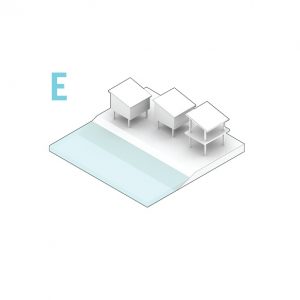Description
Man-made Levees or Dikes are artificial embankments which are built along the edges of a river or coastline to protect land from flooding and overflow (Van Zandt et al., 2020). Typically, levees are man-made hydraulic engineered structures located adjacent to a water body, along the coastline to protect land on another tangent side. In cities such as New Orleans, levees are designed to prevent inundation from hurricane surges. Dikes have similar functions and are structurally constructed similar to levees, nut are much more common in areas such as the Netherlands. While the terms are used, oftentimes, interchangeably, levees protect land that is normally dry, but that may be flooded as water levels rise; dikes protect land that would naturally be underwater most of the time. Natural vegetation with fibrous root systems such as grasses sometimes planted atop a levee’s bank so that erosion will be kept to a minimum. Typically, dikes and levees have a maximum settled height of 6 feet and a minimum levee rest width of 5 feet.








Reviews
There are no reviews yet.